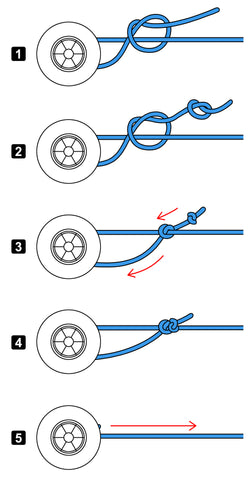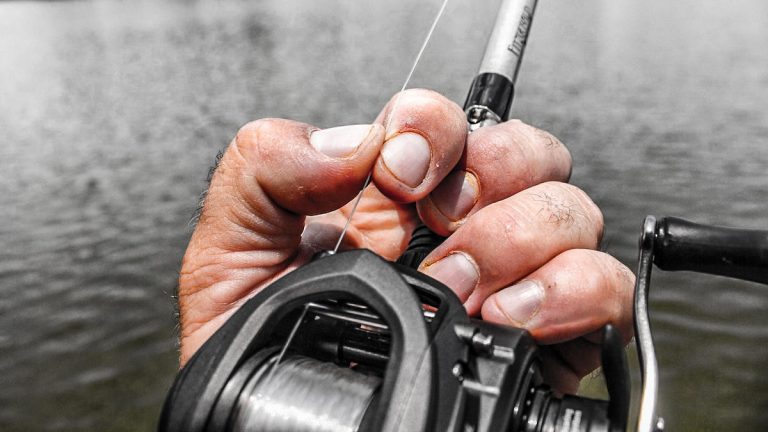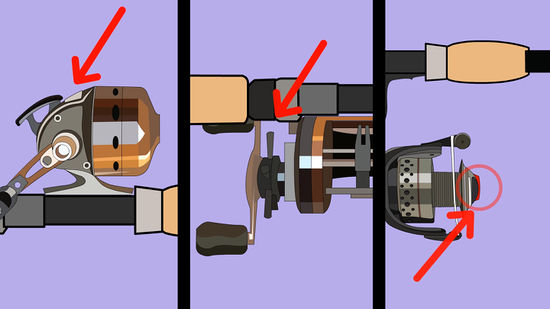How to Add Fishing Line to a Reel

To add a fishing line to a reel, first, open the bail, run the line through the first guide, and tie it to the spool. Next, close the bail and reel the line under tension.
Setting up your fishing reel with new line is a fundamental skill every angler should master. Doing it correctly can mean the difference between a successful outing and a frustrating bout with tangled line. Whether you’re a weekend fishing enthusiast or a seasoned pro, knowing how to efficiently add line to your reel is essential.
The process is relatively simple and, with a bit of practice, can be completed quickly. This introduction positions you to dive into the detailed steps of spooling your reel, thereby helping you maintain the quality and performance of your fishing gear for that perfect catch. Careful attention to this task will ensure your fishing line rests on the reel properly, reducing the likelihood of twists and knots during casting.

Credit: m.youtube.com
Gearing Up For Success
Selecting the correct fishing line is crucial for a successful day on the water. Considering factors like water clarity, species targeted, and environmental conditions helps determine the right line. For clear waters, choose a fluorocarbon line for its near invisibility. Braid lines work well for long casts and heavy cover. Monofilament is versatile and forgiving for beginners.
Having the right tools makes re-spooling easier. You will need a pair of scissors or a line cutter, a clean cloth, and the reel and rod. Ensure you have enough space to work comfortably. A line spooler tool can also help maintain tension and make the process smoother.

Credit: m.youtube.com
Prepping Your Reel
Before adding fishing line to a reel, a clean setup is crucial. Dirt and debris can hinder performance. Wipe each part with a soft cloth. Use mild soap and water for tough grime. Dry thoroughly to prevent rust.
Securing the reel to the rod ensures stability during line spooling. Confirm the reel’s foot aligns with the rod’s seat. Tighten the reel seat’s rings until snug. Double-check to avoid slippage, which could disrupt line tension.
Threading The Line
Threading the Fishing Line is a key step in preparing to fish. Start by opening the bail on your reel. Then, pull the line through the rod’s guides, starting from the one nearest the reel.
Attach the Line to the Spool using an arbor knot. After tying the knot, snip off any excess line from the loose end. Close the bail, and keep a firm grip on the line to avoid twists as you wind. Turn the handle slowly and ensure the line lays evenly across the spool.
The Spooling Process
Maintaining proper tension is crucial during the spooling process. Ensure the line is snug, but not too tight. A simple method is to run the line through your fingers. This provides a consistent tension as you wind. Position the reel above the new fishing line spool. This helps prevent tangling.
To avoid twists and tangles, flip the bail arm open. Thread the line around the reel once. Close the bail arm by hand. Watch the line as it coils onto the spool. If it forms loops, stop and fix them right away. Keep the line’s spool label facing up. It lets the line follow its natural coil onto the reel. Check for any line irregularities as you wind. Correct them instantly to prevent future knots.
Final Adjustments
After spooling, you’ll often have extra line that needs trimming. Snip the line, leaving enough to thread through the rod guides. Be careful not to cut it too short. Keep about an arm’s length of line past the rod tip.
Setting the drag system is a vital step for smooth operations. Your reel has a knob or lever to adjust drag. Tighten it until you feel a slight resistance. Test by pulling on the line. The line should leave the reel with a firm yet smooth pull. This setup helps during a catch. It prevents the line from breaking under a fish’s pull.
Credit: www.netknots.com
Maintenance Tips
Proper storage of fishing gear is crucial. Keep your gear in a cool, dry place. This prevents damage. Make sure to avoid direct sunlight, as it can wear out lines and reels.
Clean your reel regularly to maintain its performance. Use fresh water to rinse off salt and dirt. Dry thoroughly before storing. Lubricate moving parts to ensure smooth operation. Follow these simple maintenance tips and your fishing trips will always be successful.
Frequently Asked Questions Of How To Add Fishing Line To A Reel
How Do You Put Fishing Line On A Fishing Reel?
Open the bail on your reel, tie the line to the spool, and close the bail. Hold tension on the line and reel slowly to fill the spool evenly, avoiding twists. Trim any excess line after filling.
How Do You Fill A Reel With A New Line?
Open the bail of your fishing reel and tie the new line to the spool with an arbor knot. Close the bail, then evenly wind the line onto the spool, maintaining slight tension. Fill the spool to about 1/8 inch from the rim.
How Do You Tie A Line To A Spinning Reel?
Open the bail on your spinning reel. Thread the end of your line through the guides. Wrap the line around the spool twice. Tie a simple overhand knot around the main line. Pull the tag end to tighten, snip any excess, and close the bail.
How Do You Put Line On A Reel Without It Twisting?
Lay the spool flat, apply light tension, and reel slowly to prevent twisting. Ensure the line matches the reel’s rotation during the process.
Conclusion
Spooling new fishing line is a skill every angler should master. With the steps outlined, you can ensure a hassle-free experience. Remember to load the line tightly and avoid twists for optimal casting. Tackle your next fishing adventure with confidence, knowing your reel is expertly prepared.
Happy fishing!



